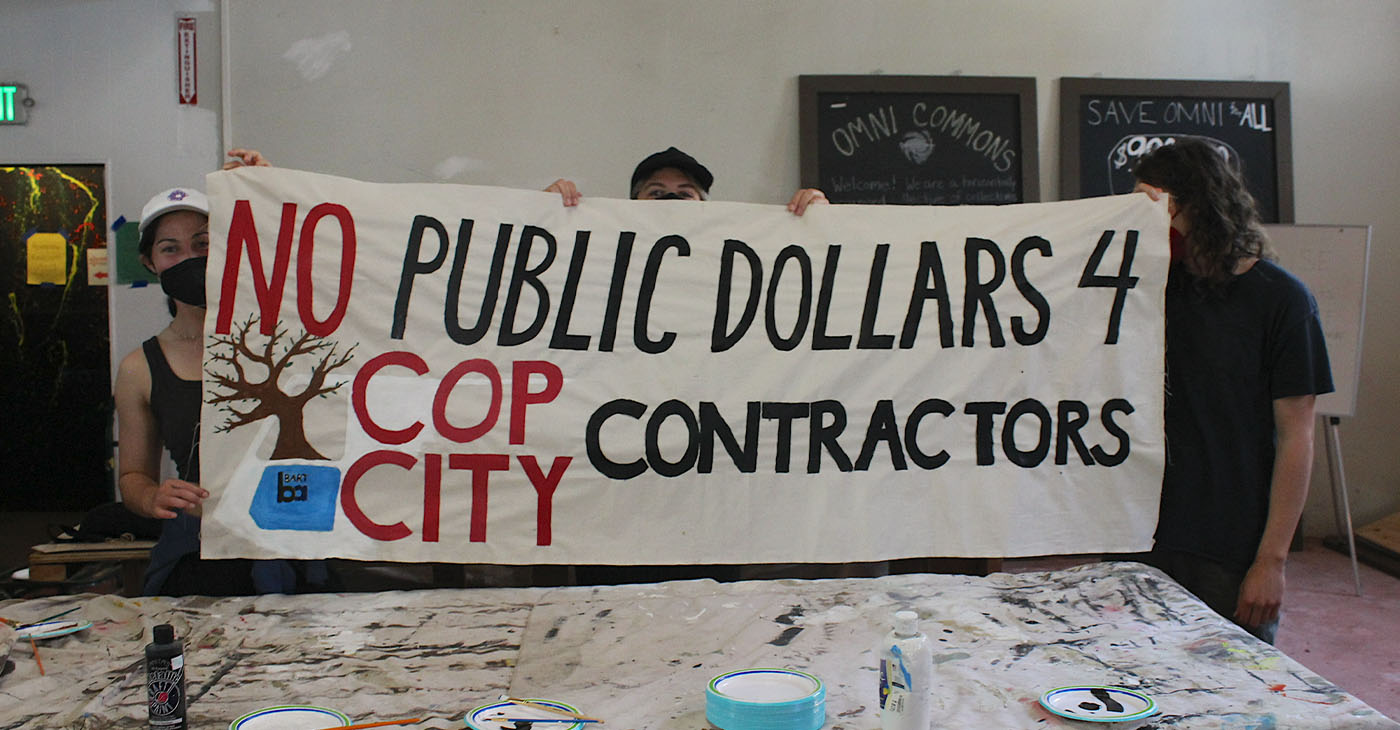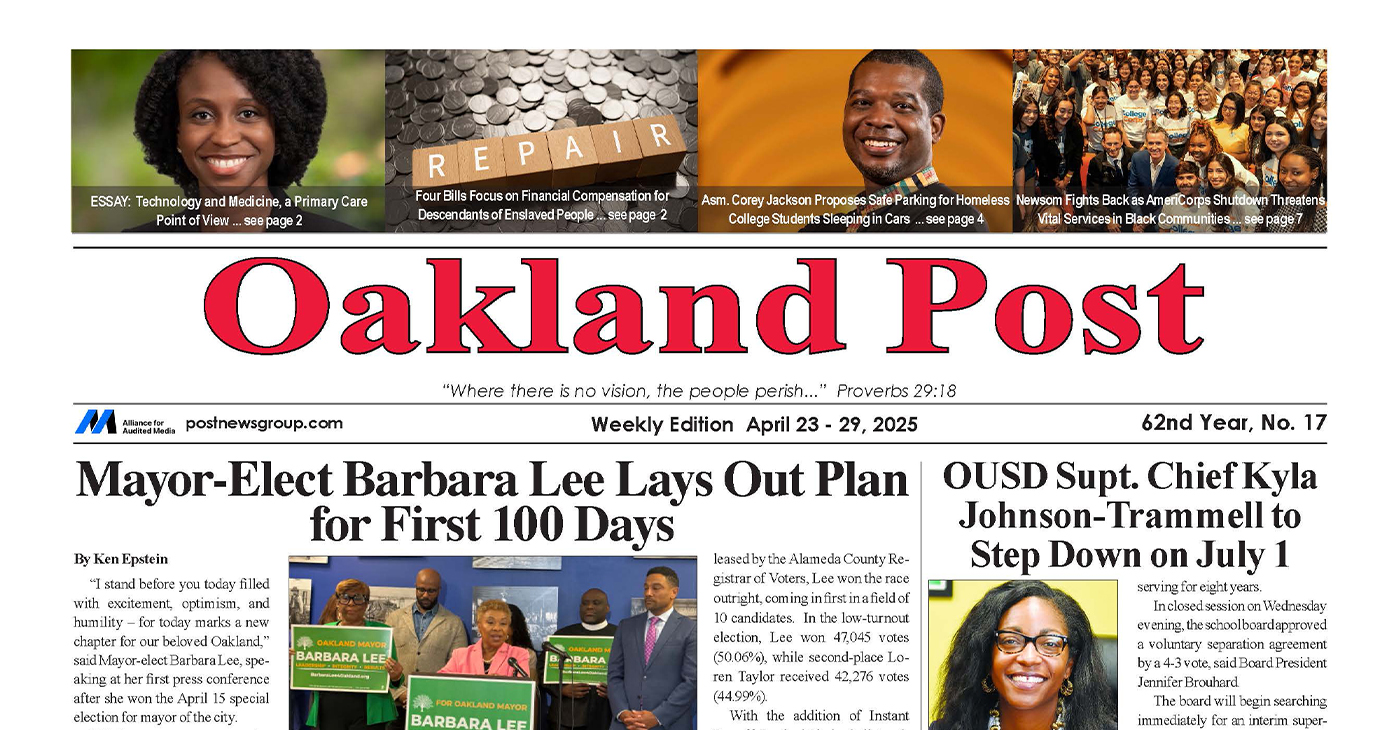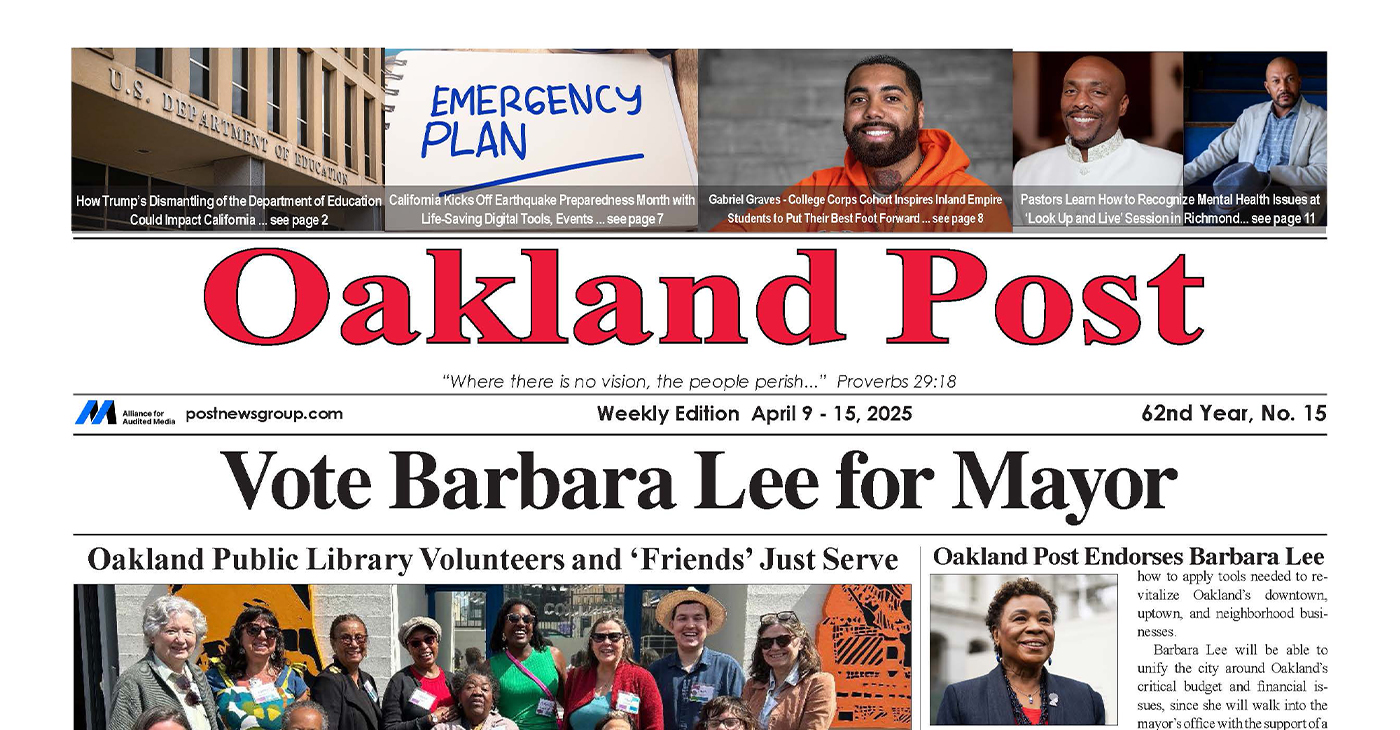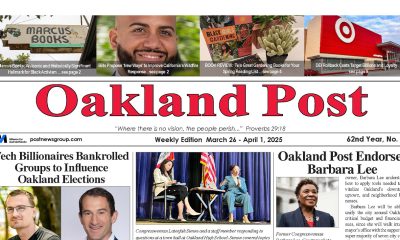Bay Area
Bay Area Residents Support ‘Stop Cop City’ Movement in Atlanta
Residents in Oakland and throughout the Bay Area are supporting efforts to stop the construction of The Atlanta Public Safety Training Center, which many refer to as ‘Cop City.” By a vote of 11-4, the Atlanta City Council approved $31 million to build the center on June 6 despite 14 hours of sometimes strident testimony from citizens and activists.

By Zack Haber
Residents in Oakland and throughout the Bay Area are supporting efforts to stop the construction of The Atlanta Public Safety Training Center, which many refer to as ‘Cop City.”
By a vote of 11-4, the Atlanta City Council approved $31 million to build the center on June 6 despite 14 hours of sometimes strident testimony from citizens and activists.
The training center, if constructed, would be built on 85 acres city of Atlanta-owned forest in nearby DeKalb County. The area is part of what those working to stop Cop City call Weelaunee Forest, the name originated by the Muscogee Creek people who inhabited the land before the United States government removed them in the 1820s and 30s.
Plans released by The Atlanta Police Foundation, the non-profit organization that would build it, show the site is slated to include a mock village, shooting range, and driving range for police and fire / rescue training.
In Atlanta and the surrounding area, many residents have pushed back against the development of Cop City in a number of ways that include packing city hall during council meetings to speak out against its construction and living in Weelaunee Forest to protect it.
Those against constructing the site have claimed that its creation would both cause environmental harm, provide a site to further militarize policing, and negatively impact the psychological and physical well-being of the predominately Black residents who would live near it.
Atlanta Police officers have arrested over 40 Stop Cop City protesters in the Weelaunee Forest and charged them with domestic terror this year. In January, officers killed Tortuguita Terán, an indigenous Weelaunee Forest defender, by shooting them 57 times.
In a report from June of 2021 about the training center, The Atlanta Police Foundation wrote that a “violent crime surge in Atlanta underscores the urgency of our City’s need to make this investment.”
Data show reported violent crime in Atlanta decreased steadily from 2009 to 2018, then increased slightly in 2019 to 2021, when such crimes occurred about half as often as they had in 2009.
Documents shared through a records request with the Atlanta Community Press Collective show that The Atlanta Police Foundation plans to recruit 43% of Cop City trainees from “out-of-state.”
The collective shared concerns that Cop City would “likely function as a training center…where law enforcement agencies from different states, and possibly countries, would develop and share violent policing tactics.”
Out of desire to support those in the Atlanta area, stop the destruction of forest, and prevent the construction of a site that could be used to train police officers throughout the nation, Bay Area activists have been hosting rallies, fundraisers, political education, and art events to stop Cop City.
“This is a large struggle against one of the most concentrated examples of urban militarization in recent years,” said Juan V Luz, a Berkeley resident and supporter of the Stop Cop City movement. “It’s a site that would train people to harm people like me and maim and murder my friends. It’s important for those on the ground in the local struggle to know we have their backs.”
Luz was one of over 60 people who attended a Stop Cop City rally on May 30 in downtown Oakland. At the rally, speakers connected the plans to create Cop City with state reaction to the George Floyd protests and uprisings.
They also pointed out companies and contractors involved with funding and constructing the training center also operate in the Bay Area.
While the city of Atlanta approved allocating about $31 million into the creation of Cop City, The Atlanta Police Foundation is funding the rest, about $60 million, mostly though contributions through large corporations including UPS and Chick-fil-A.
A flyer distributed at the rally stated that protestors are calling for companies and contractors to “divest from The Atlanta Police Foundation.”
Protestors marched through downtown Oakland and entered into an office building where Atlas Technical Consultants operates at 555 12th Street. People working in the Stop Cop City movement have identified Atlas Technical Consultants as working directly with Brasfield & Gorrie, a primary contractor for the training site, and claim to have spotted Atlas vehicles in the Weelaunee Forest.
Atlas did not respond to multiple requests for comment on this article. While in the building, protestors chanted “Stop Cop City” and threw dried leaves, sticks, and flowers throughout the lobby.
Luz told The Oakland Post he felt that the action was a creative way to emphasize ecological factors of the Stop Cop City movement.
“The effort to replace a forest with a police training facility is peak 20th-century police power,” Luz said. “Bringing sticks and leaves into this swanky office building showed you can try to destroy the forest, but we’ll bring the forest to you.”
At a rally in San Francisco on March 15, protestors marched to Bank of America and Wells Fargo, companies which have contributed to The Atlanta Police Foundation, and demanded that they to stop funding Cop City.
During a political education class and art build at Omni Commons in Oakland on June 3, a group of researchers and activists presented a talk and a slideshow to several dozen people, and then attendees built banners to support the Stop Cop City Movement.
The presentation largely focused on Bay Area connections to Cop City. It mentioned Jestin Johnson, Oakland’s newly appointed city administrator, and his connections to Cop City. Johnson was part of a 13-member board in Atlanta that recommended Cop City’s location, funding model, and preliminary budget.
The presentation largely focused on Atlas Technical Consultants, and outlined over a dozen contracts Atlas has with public transportation agencies across California. A majority of these contracts are for work in the Bay Area.
Three contracts are with BART specifically. The slideshow speculated that Atlas could seek a contract for the BART Silicon Valley Phase II Extension. That extension’s major construction activities are set to begin in 2025.
One of the goals for the extension is creating “cleaner air.” A slide in the slideshow reads that it would be “counterproductive” to that goal if “the contractors who build it profit of off forest destruction.”
During the art building portion of the event, participants created banners demanding public transit agencies divest from contractors like Atlas unless they stop being involved in Cop City.
One read “no public dollars for cop city contractors,” emphasizing that contracts through public transit agencies are funded by the public through taxes.
At the rally in Oakland on May 30, protestors and groups that supported the march, like Critical Resistance and Black Rose Anarchist Federation, connected the Stop Cop City movement to the Stop Urban Shield Coalition.
Urban Shield, a yearly event hosted on the weekend of 9/11 which started occurring in 2007 in Oakland, was a large SWAT training and gear expo that would bring in about 200 law enforcement agencies to the area, welcomed rightwing extremists, and was financed federally by the Department of Homeland Security.
Starting in 2013, a grassroots coalition of labor unions, faith-based groups, and anti-war and racial justice groups began speaking out against Urban Shield, and pressured Oakland and Alameda County to stop hosting it. Oakland stopped hosting the event in 2014.
Urban Shield continued to occur yearly in Pleasanton until 2018, but then stopped occurring altogether after the Alameda County Board of Supervisors voted to cut the program.
Mohamed Shehk, a campaigns director for Critical Resistance, a national grassroots organization that works to abolish the prison industrial complex, said that he sees “a lot of similarities” between Urban Shield and Cop City.
“Both programs are essentially rooted in a framework of police urban warfare and have used the veil of public safety as a way to expand policing power,” Shehk said.
Shehk hopes people of Atlanta working to stop Cop City can respond in a similar manner that the Stop Urban Shield Coalition did.
“After more than five years of organizing with the Stop Urban Shield Coalition we were able to defund and dismantle it,” Shehk said. “We are hopeful that the people of Atlanta can defund and dismantle Cop City.”
Activism
Oakland Post: Week of April 23 – 29, 2025
The printed Weekly Edition of the Oakland Post: Week of April 23 – 29, 2025

To enlarge your view of this issue, use the slider, magnifying glass icon or full page icon in the lower right corner of the browser window.
Activism
Oakland Post: Week of April 16 – 22, 2025
The printed Weekly Edition of the Oakland Post: Week of April 16 – 22, 2025

To enlarge your view of this issue, use the slider, magnifying glass icon or full page icon in the lower right corner of the browser window.
Activism
Oakland Post: Week of April 9 – 15, 2025
The printed Weekly Edition of the Oakland Post: Week of April 9 – 15, 2025

To enlarge your view of this issue, use the slider, magnifying glass icon or full page icon in the lower right corner of the browser window.
-

 Activism4 weeks ago
Activism4 weeks agoOakland Post Endorses Barbara Lee
-

 Activism4 weeks ago
Activism4 weeks agoOakland Post: Week of March 28 – April 1, 2025
-

 Activism3 weeks ago
Activism3 weeks agoOakland Post: Week of April 2 – 8, 2025
-

 #NNPA BlackPress3 weeks ago
#NNPA BlackPress3 weeks agoTrump Profits, Black America Pays the Price
-

 Activism2 weeks ago
Activism2 weeks agoOakland Post: Week of April 9 – 15, 2025
-

 #NNPA BlackPress3 weeks ago
#NNPA BlackPress3 weeks agoHarriet Tubman Scrubbed; DEI Dismantled
-

 #NNPA BlackPress3 weeks ago
#NNPA BlackPress3 weeks agoTrump Targets a Slavery Removal from the National Museum of African-American History and Culture
-

 #NNPA BlackPress3 weeks ago
#NNPA BlackPress3 weeks agoLawmakers Greenlight Reparations Study for Descendants of Enslaved Marylanders






















































